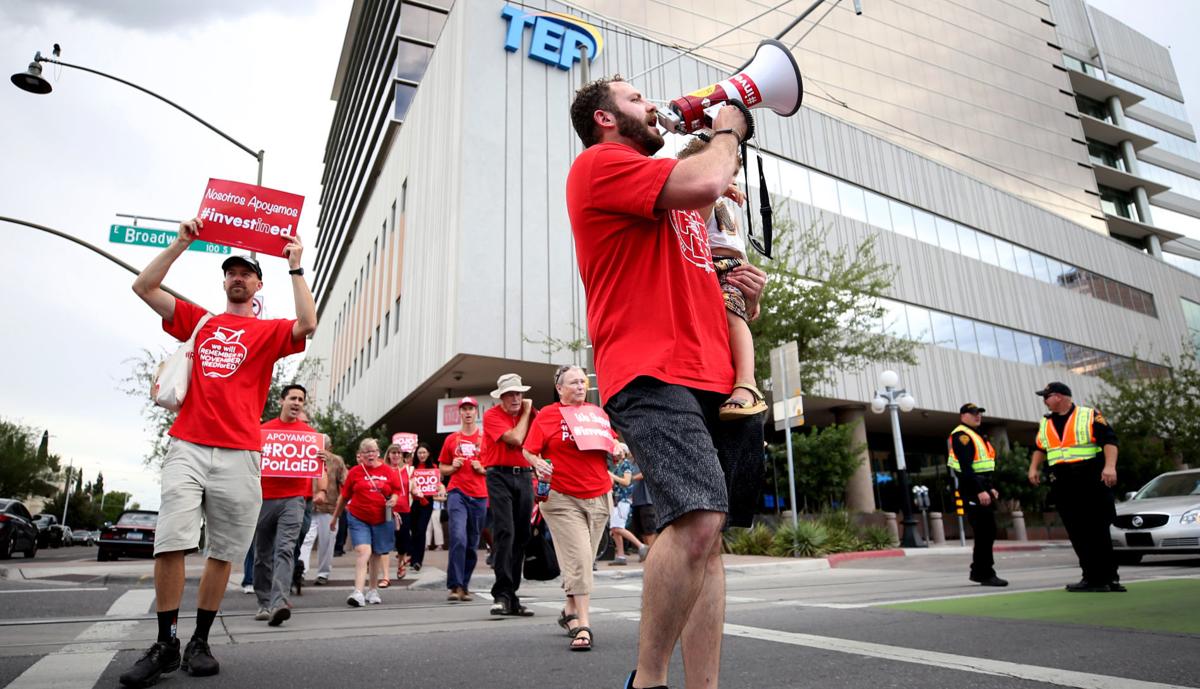PHOENIX — Two justices of the Arizona Supreme Court are criticizing their colleagues for their decision blocking voters from deciding whether to increase income taxes on the most wealthy to fund education.
In a ruling released Friday, the five-member majority explained why they ruled on Aug. 29 that the “Invest in Ed” measure could not be on the ballot. They said the 100-word description of the initiative was so flawed that it likely confused those who signed the petitions.
But Chief Justice Scott Bales and Justice Ann Scott Timmer, in newly released dissents, said the other five justices ignored Arizona law and court precedent. And they said the voters should have gotten the last word.
Both acknowledged that the legally required description did not mention that it is possible the voter measure, if approved, could have done more than hike taxes on those earning more than $250,000 a year.
But Bales and Timmer said Arizona law does not require the description that appears on initiative petitions contain each and every provision. In fact, they noted, the law tells would-be signers to be aware that the measure may be more complex and they should read the entire language which is attached to signature sheets.
Friday’s ruling does more than explain the majority’s Aug. 29 reasoning in kicking the measure off the ballot.
It also becomes precedent that future justices will use to decide what does and does not meet the standards to allow voter-proposed laws to get on the ballot. That, in turn provides a roadmap for foes of future initiatives to use allegations of flaws in the 100-word description to have judges kill measures as opposed to actually having to debate the merits of the proposals.
David Lujan, whose Center for Economic Progress crafted the initiative, blasted the court for quashing the measure based on a disputed description.
“The court took away the voters’ right to decide,” he said. And the precedent set is more than academic for Lujan and supporters.
“Our schools are still underfunded,” he said, saying backers still consider a tax on the highest wage earners a valid method of raising additional dollars. Lujan said education advocates will ask lawmakers this coming year to put in more dollars.
“And if that doesn’t work, the ballot is always an option,” he said.
There is other potential fallout from Friday’s ruling.
Justices John Pelander and Clint Bolick, who voted with the majority, are up for re-election this year under Arizona’s “retain-or-reject” system of merit selection. That means they need to get more people to vote to give them another six-year term than those who decide they should be turned out of office.
Several education activists had already targeted the pair for removal after the Aug. 29 announcement, though they would be replaced by someone chosen by Gov. Doug Ducey, a foe of the tax hike.
And there’s something else.
Shortly after the Aug. 29 order, gubernatorial press aide Daniel Scarpinato indicated he had heard it was a 5-2 ruling. That was designed to show the ruling was not affected by the decision by the Republican-controlled Legislature to expand the court to seven, giving Ducey two new appointments, both of whom voted with the majority.
The vote tally was not officially known until Friday.
“It’s disturbing the opinion came down exactly as the leak from the governor’s office said it would,” Lujan said. “That sends a signal that our system is rigged against voters’ constitutional right to put something on the ballot.”
Scarpinato insisted he had no inside information but was simply passing along a rumor. He would not disclose the source.
Bales, in an email obtained Friday by Capitol Media Services, said that former state lawmaker Jonathan Paton told him he had heard a “rumor” of the vote from someone else. But Paton would not tell Bales or Capitol Media Services who that was.
And Supreme Court spokesman Aaron Nash said an internal inquiry “has identified no such disclosure” of nonpublic information.
The essence of Friday’s 5-2 ruling was no surprise.
In that Aug. 29 order, the majority faulted initiative organizers for the way they explained the proposal to raise $690 million a year for education in the 100-word description on petitions.
Part of that is the tax rate on earnings of more than $250,000 a year for individuals — $500,000 for couples — would have gone from 4.54 percent to 8 percent. The initiative described that as a 3.46 percent increase.
The majority said it should have been described as an increase of 3.46 percentage points. The actual percent change was 76 percent.
Similarly, they said the new 9 percent tax bracket for individual earnings above $500,000 should have been described as a 98 percent increase.
Bales, in his Friday dissent, chided his colleagues for keeping a measure off the ballot because the description failed to use “percentage points.”
“This does not mean that the description, as worded, created a substantial danger of confusion or unfairness,” he wrote.
The majority, in Friday’s unsigned opinion, disagreed.
“This difference is so significant that it could materially affect whether a person would sign the petition, as it is one thing to increase someone’s taxes by between three and four percent and another to nearly double them,” it reads.
There also was the conclusion by the majority on Friday that the initiative, as written, would have effectively repealed a 2015 law which requires the break points between tax brackets to be indexed annually to compensate for inflation. That was never mentioned in the description.





